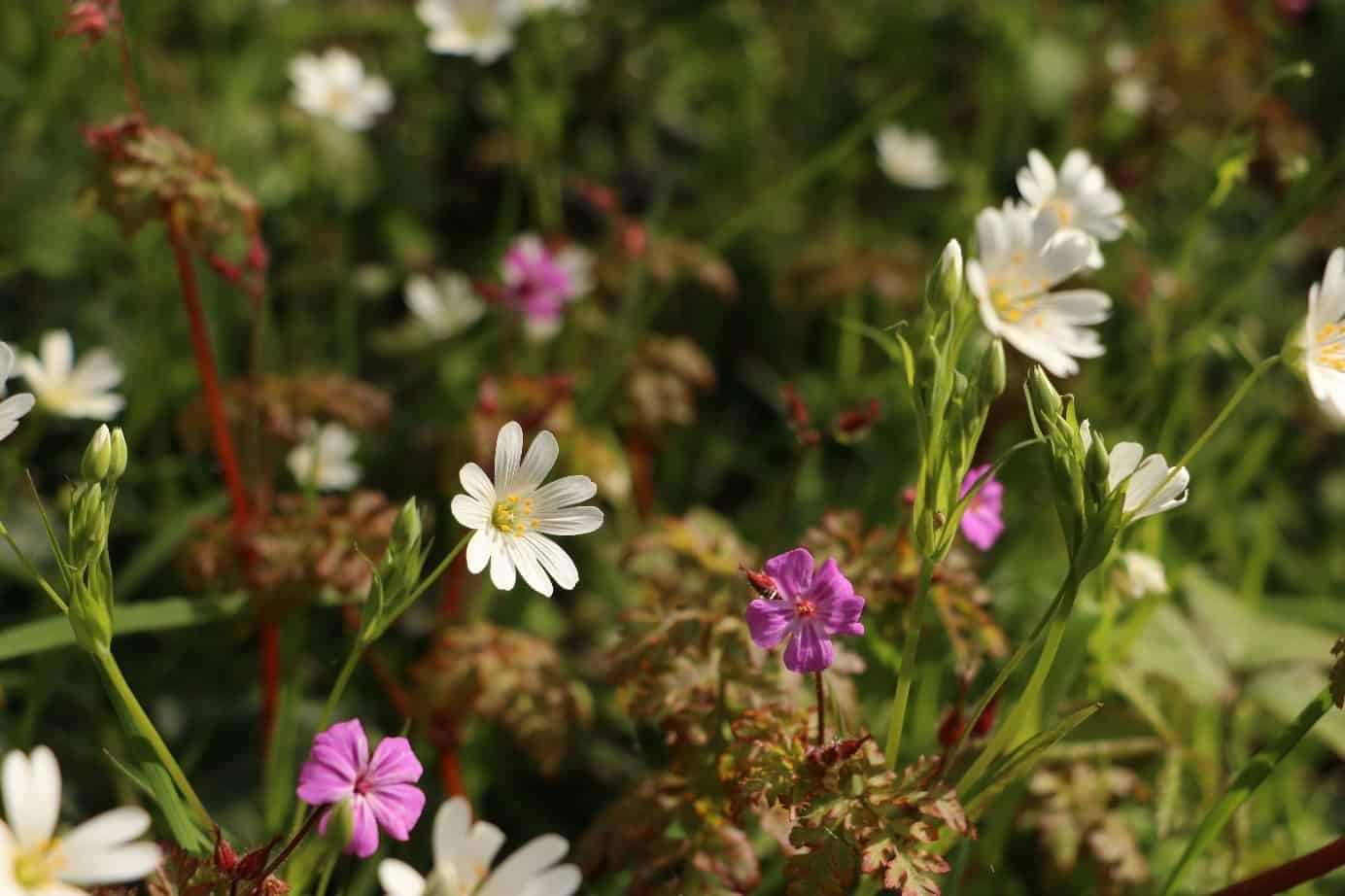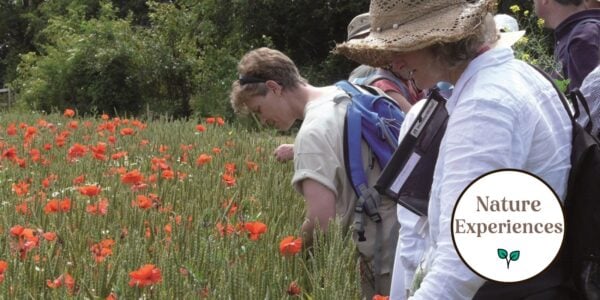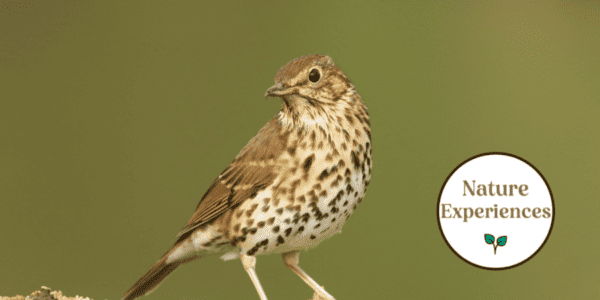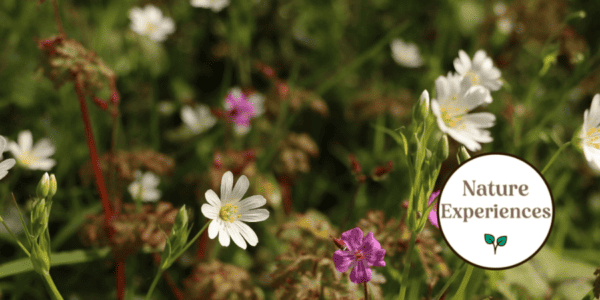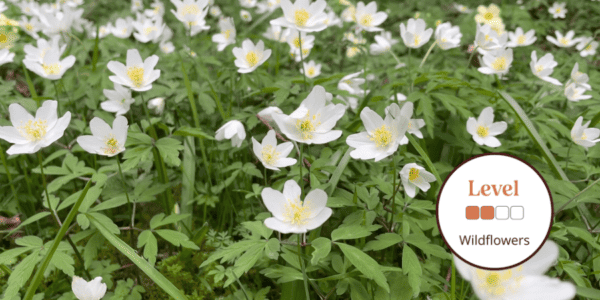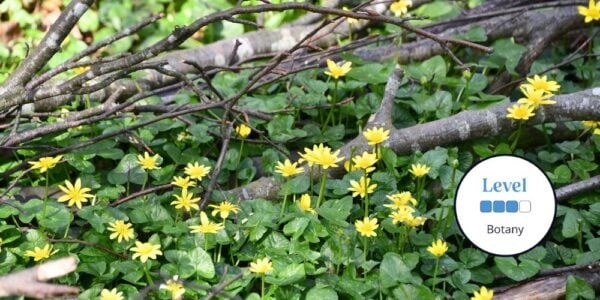This beginner course is a chance for you to further your wildflower ID skills. You’ll be learning how to identify wildflowers correctly by learning to recognise diagnostic features of major plant families. We will be exploring the beautiful countryside around Flatford Mill and the wider Suffolk countryside. This includes priority meadows and coastal sites.
Read more
Those who have completed the ‘wildflower ID for complete beginners’ could benefit from attending this course afterwards, but this is not required as no previous knowledge will be assumed and the key aspects of floral and plant anatomy covered in the introductory session. This course will focus on gaining confidence in using wildflower keys to independently identify wildflowers in the field.
What will be covered during this course?
- Floral anatomy and botanical terms to help understand species descriptions.
- Basic skills to start identifying species of wildflowers using a key.
- Key characteristics of some of the most important families in the British flora.
- Excursions to sites around Suffolk to encounter different species and become more familiar with keying out plants.
By the end of the course you will be able to:
- Describe floral and vegetative anatomy with botanical terms.
- Explain the difference between monocots and dicots.
- Define different types of inflorescences.
- Identify the difference between a superior and inferior ovary.
- Define dry/succulent fruits and compare true/false fruits and simple/compound fruits, and the difference between indehiscent/dehiscent dry fruits.
- Apply knowledge of the above by looking at plants closely in the field, and practice using a key to identify flowers.
- List major plant families of flowering plants found in Britain and differentiate them from each other by distinguishing between these key features: venation, perianth, ovary.
- Increase confidence in using botanical keys (which refer to anatomical features covered in the classroom sessions of this course) by practicing species identification in the field using keys.
This course is targeted at anyone who is interested in learning more about this area of natural history.
No prior knowledge will be assumed; participants with at least some prior knowledge may find it a little easier to build on their existing learning, but it isn’t necessary.
Please note: This course is not part of the Biodiversity learning framework, this course is organised by Flatford Mill and the tutor.
About the tutor
Alanna Cooper
Alanna Cooper is a botanist and principal ecologist with over 16 years’ experience in ecological consultancy. Alanna has experience of botanical survey work and habitat management in both Canada and the UK. She has a passion for wildflowers and helping beginners to botany develop their identification skills.
Explore our range of nature courses hosted by our engaging tutors and learn from their expertise and knowledge. Our nature experiences are a chance to meet like-minded people, a chance to unwind from everyday life, and a great opportunity to experience the UK’s glorious wildlife and the surrounding countryside of our field centres.
Example Timetable
Example Timetable
This timetable is subject to change but should give a clear outline of what to expect. For the field excursion, you will walk one to three miles (depending on the site) over uneven ground during the afternoon. This will be done at a slow ‘botanising’ pace, but a reasonable level of fitness is required.
Day 1
1930 – 2100 Classroom Session
Day 2
10:00-12:30 Classroom session
Introduction to flowering plants, parts of a flower, monocot vs. dicot, vegetative parts of the plant, inflorescences and fruits.
12:30-13:30 Lunch
13:30-17:00 Outside around Flatford
Practice using a simple identification key to identify wildflowers to species level. This will mainly be a group activity, but there will be a chance to have a go individually or in smaller groups if desired.
19:30-21:00 Classroom session after dinner – introduction to flower families
An introduction to the important flowering plant families in Britain. We will look at some of the top families (ranked by the number of species that occur in Britain in each family) and the key characteristics to help identify them.
Day 3
10:00-17:00 Excursion to Hutchinson’s Meadow and Shingle Street
Practise identification skills with an excursion to some beautiful grassland sites.
19:30-21:00 Outside around Flatford
A closer look at the large and ubiquitous families Apiaceae and Asteraceae with a field excursion at the centre.
Day 4
10:00-15:00 Excursion to woodland site
An excursion to continue practising with the key and encounter different plants in an exceptional woodland habitat. Exact site TBC based on reconnaissance outcome.
15:00-16:00 Consolidation of learning in classroom and final questions.
What's Included
Check-in is between 1600-1800, if you are arriving after 1800 please advise us, so we can ensure you are advised of access codes, room key location, and room location.
You will meet the tutor at dinner, and you will have your first session after dinner.
Before You Attend
What to bring
Since this is a beginner’s course, all guidebooks and hand lenses will be provided by the tutor to borrow. However, if you have your own hand lens (x10 magnification recommended), or your own copy of a flower identification book, please bring this along. The tutor will have copies of the ‘The Wild Flower Key (revised edition)’ by Francis Rose revised and updated by Clare O’Reilly, to practice using in the field, although books may need to be shared depending on course numbers.

